After settling in, we were ready for dinner and a get-acquainted stroll into this historic city none of us had ever visited. We walked into the huge Central Railway Station, just across the street, the largest in this part of Bavaria. (Had we the time, this place would have been very helpful for daytrips to other cities by rail.) Out the other end and around the corner, we quickly found our destination, the Osteria del Centro.
Energized by a delightful dinner there, we were soon admiring the Nuremberg State Theater:

Our in-depth tour of Nuremberg began the next morning. (It was preceded by a hotel breakfast buffet that would set a lofty standard for those thereafter.) With Viking supplying the bus and tour guide, our first stop was Nuremberg Castle. This portal provided our entrance:
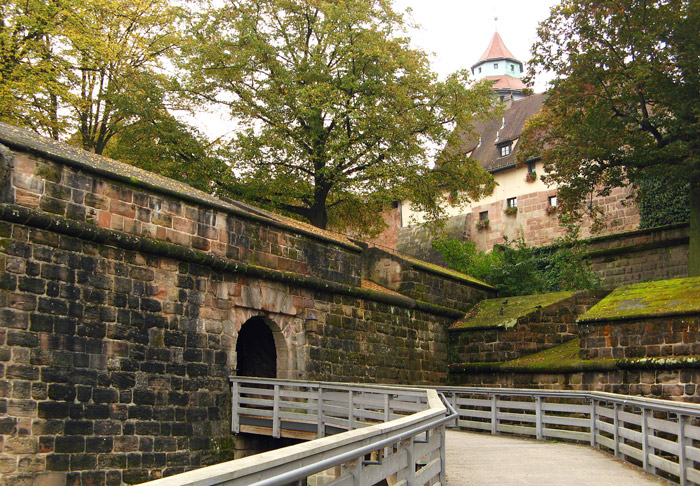
Construction on the complex that’s visible today began about 1200 AD. This castle was one of the most important fortified imperial palaces of the old Holy Roman Empire. Although the castle was extensively damaged in WWII and restored afterward, its most prominent feature, the Sinwell Tower, remarkably, was unscathed by the war:
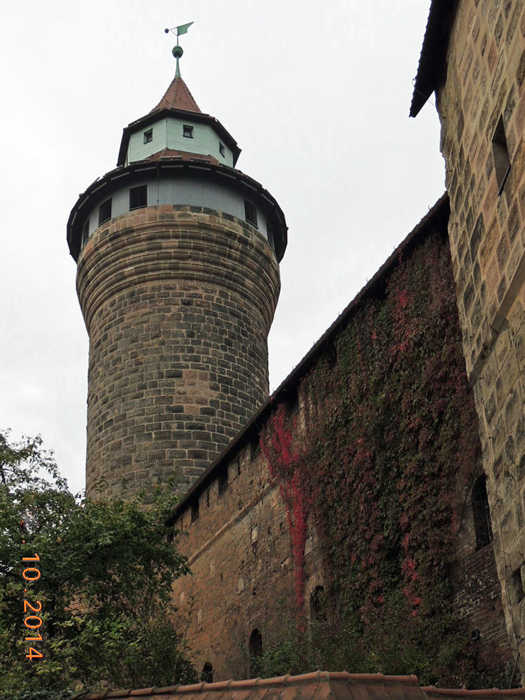
Indoors, we toured the imperial apartments, the double chapel (royalty above, court staff below) and a museum of weapons and castle history. Outdoors, we had access to the courtyards and rooftop views over Nuremberg’s Old Town:
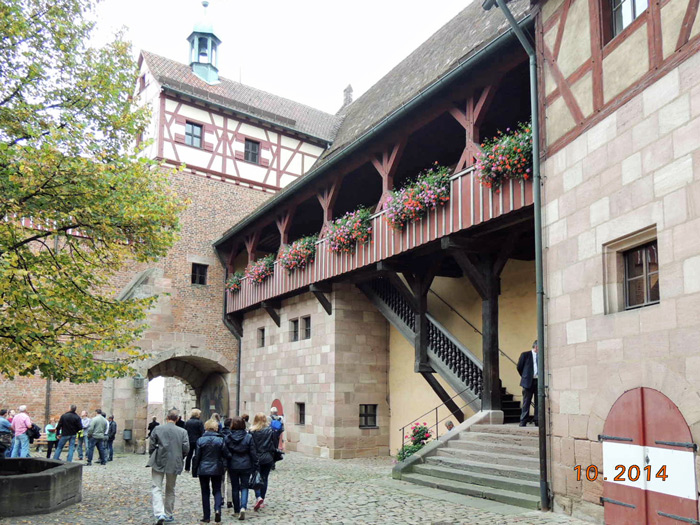
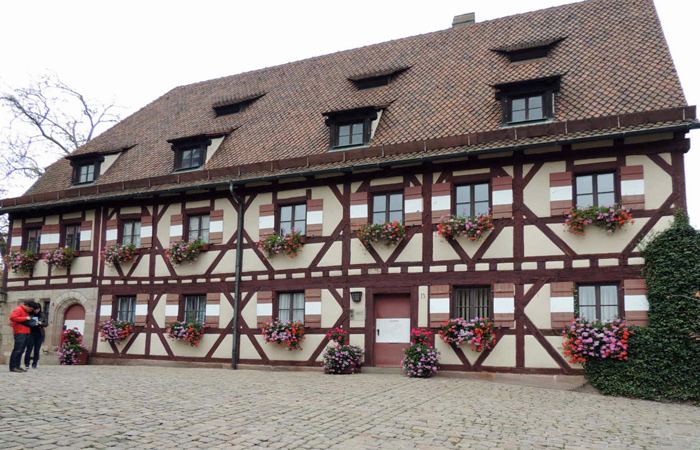
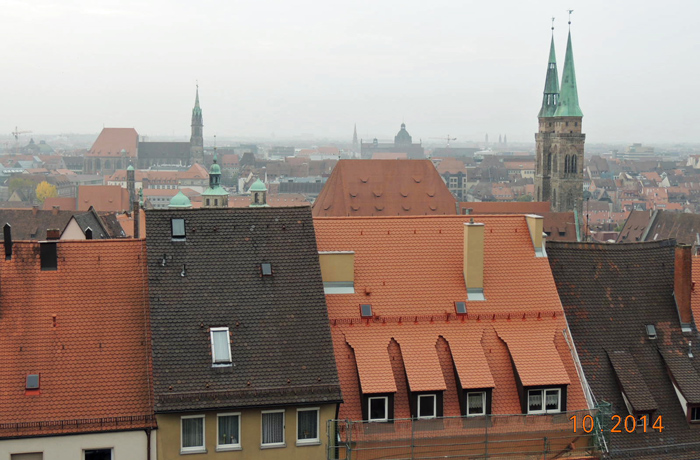
In a separate building that contained the Deep Well, we watched a memorable demonstration. A video camera and light were lowered slowly to the water surface, 150’ below, while the live video played on a monitor, giving a spectacular view of the descent. By means of this well, water was always available to the castle occupants, even in times of siege.
Only one garden is preserved at the castle of the many that once existed:
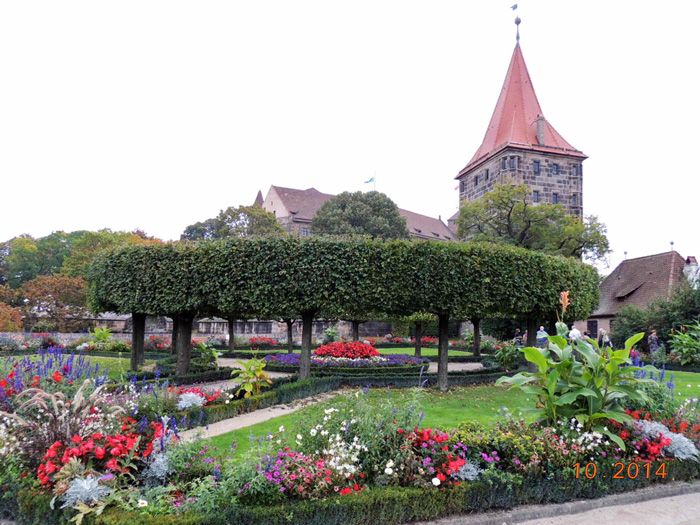
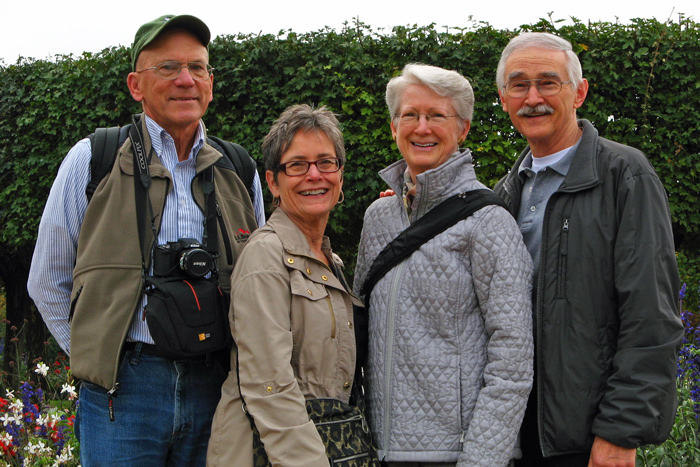
Downhill from the castle, we were soon looking at the 15th-century Albrecht Dürer’s House, seen here in an Internet photo:
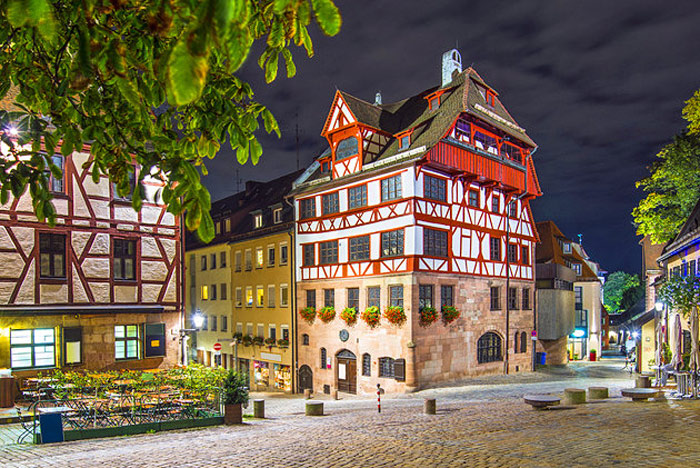
From an upper level of that museum, we had a view of the Tiergärtner Tor, a small but perfectly preserved medieval square (from which the preceding photo was taken):
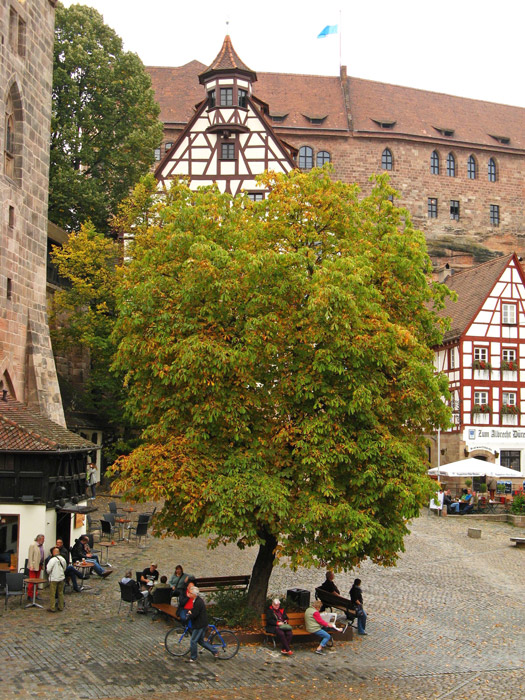
Refreshed, we strode off to explore more of the Alte Stadt (Old Town to us). Nuremberg has been famous as a toy manufacturing center since medieval times. So, it was no surprise to find a Toy Museum near its center. A wide assortment of traditional and modern toys can be enjoyed on its four floors:
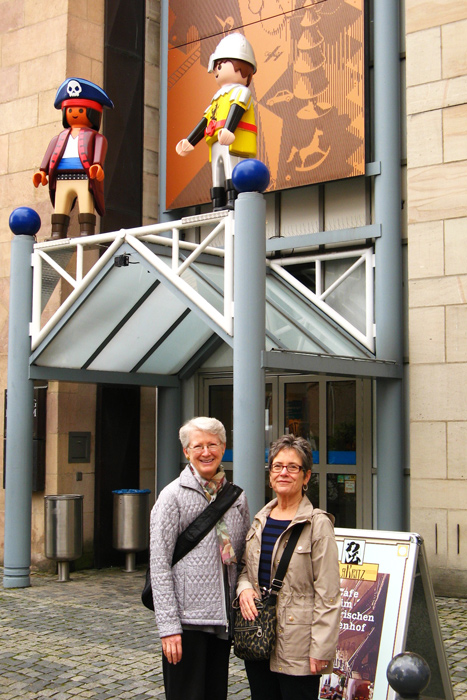
Bisecting the old town, the Pegnitz River meanders gently on its way:
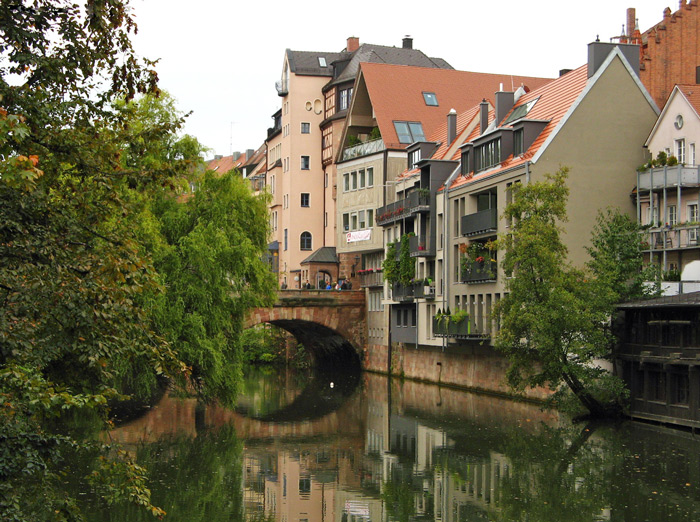
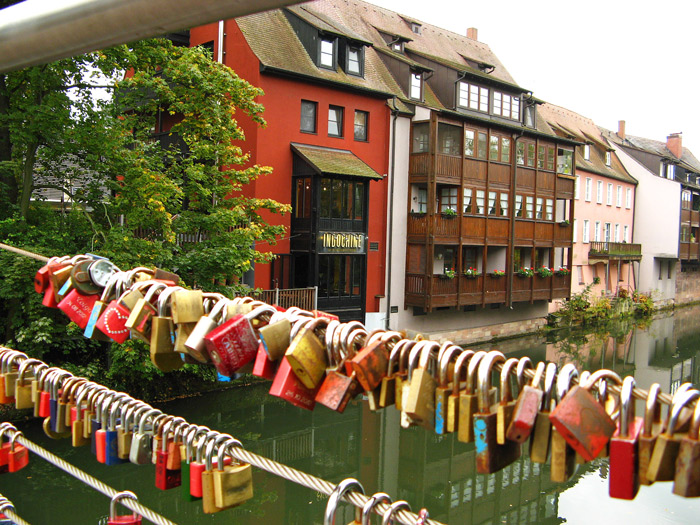
Once covered in white plaster, the White Tower (Weisser Turm) was part of the city walls, dating back to around 1250:
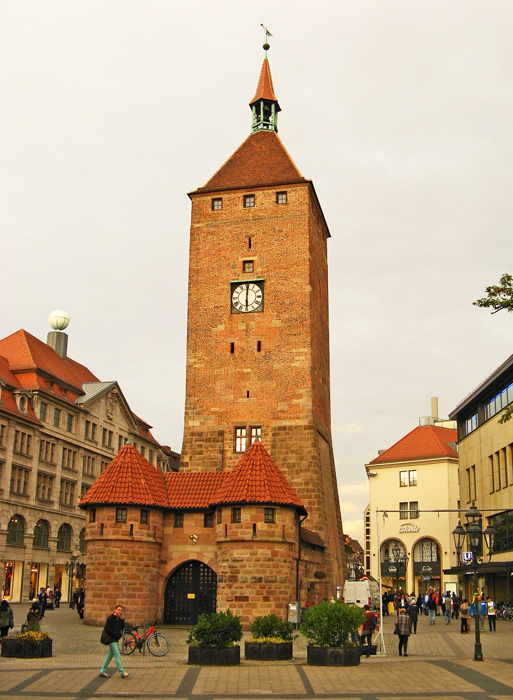
On the opposite side of the tower is the Marriage Carousel Fountain (Ehekarussell), a controversial work built in 1984 in a pedestrian shopping area. The fountain is a cynical portrayal of married life from courtship to death:
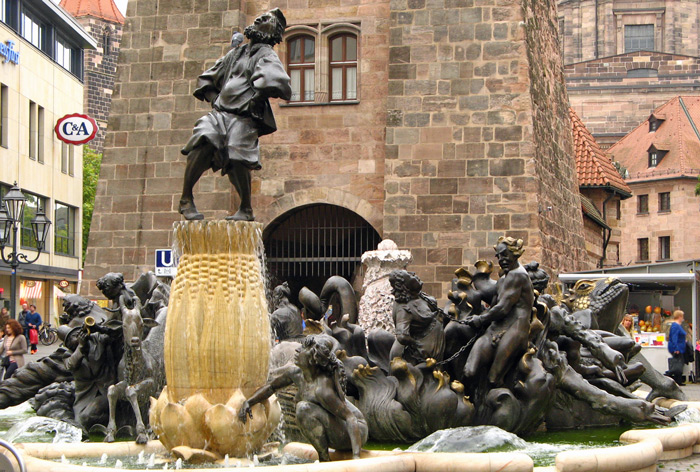
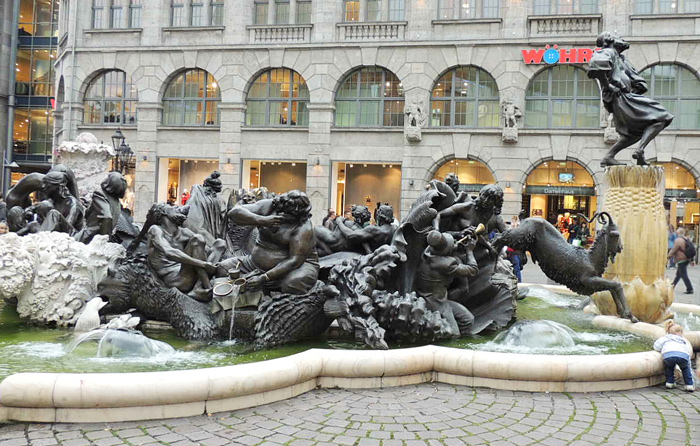
Back across the Pegnitz is a fountain of quite a different stripe. The Schöner Brunnen (which means beautiful fountain) is a 14th-century creation in Nuremberg’s main market square:
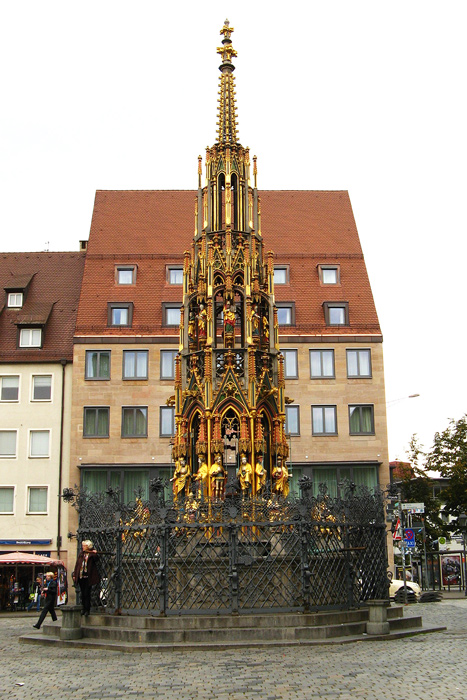
The fountain is adorned with 40 colorful figures, including the four Evangelists, Moses, seven Prophets of the Old Testament and many characters well-known when the fountain was built but long since forgotten:
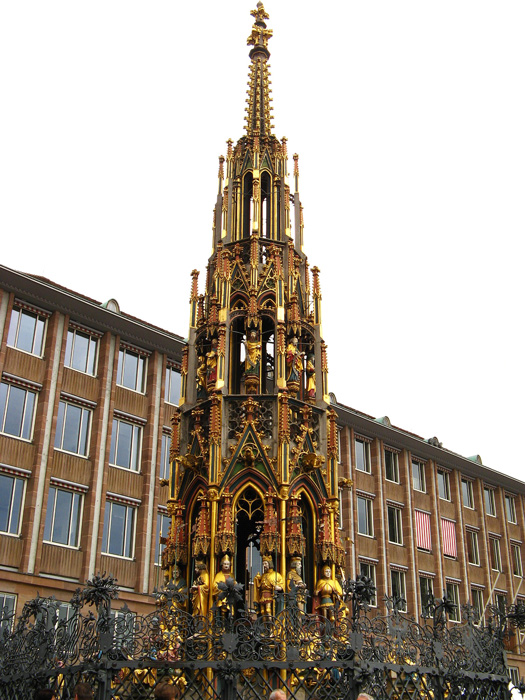
Two modern characters seem to be hoping for a total of 42:
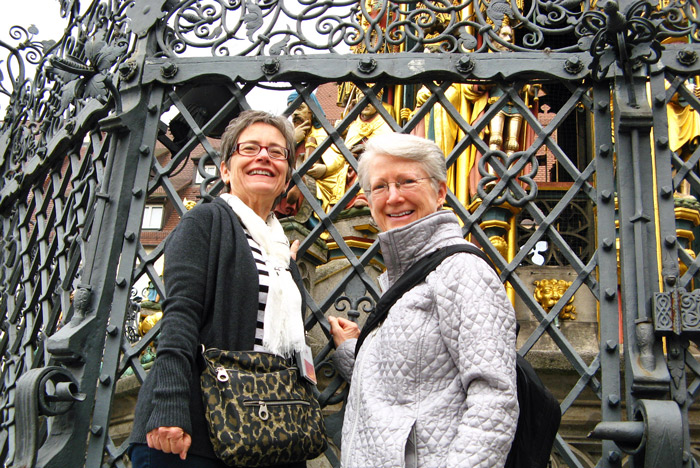
We visited all three of the main churches in the Old Town: St. Sebaldus, a 13th-century creation; the Frauenkirche from the 14th; and St. Lorenz, finished in the 15th-century. The largest and most easily photographed is St. Lorenz, depicted in the photos below:
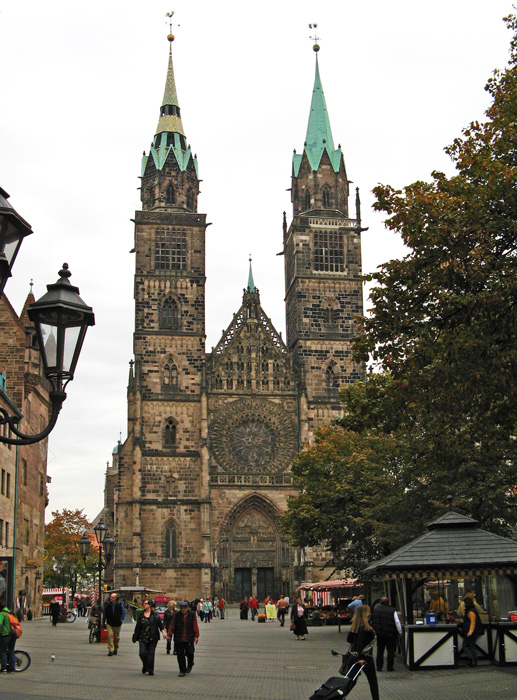
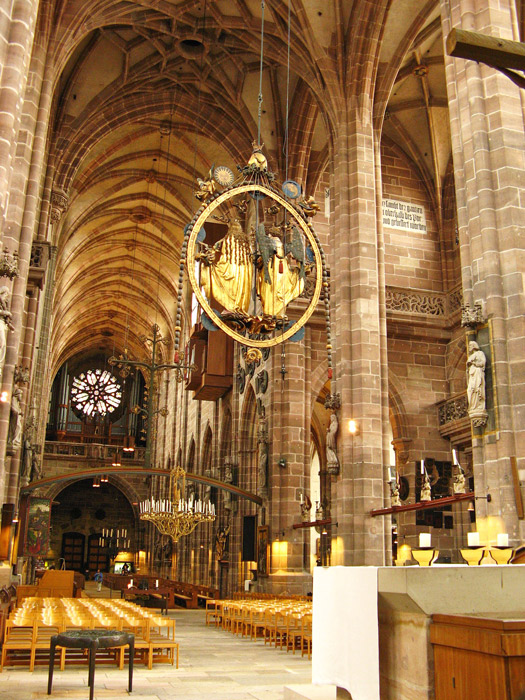
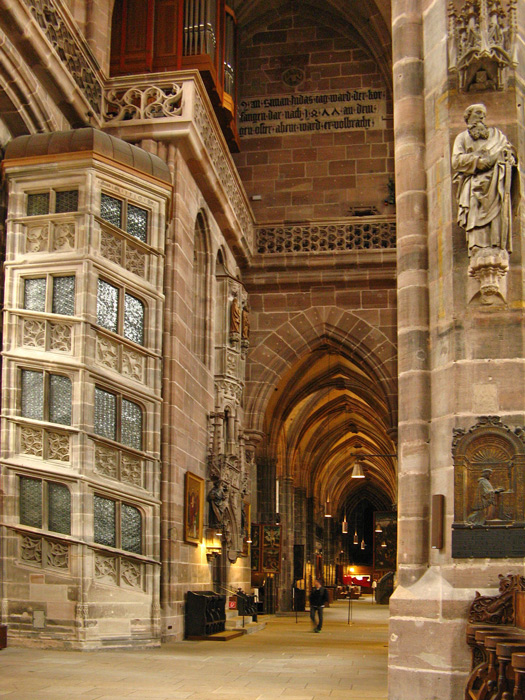
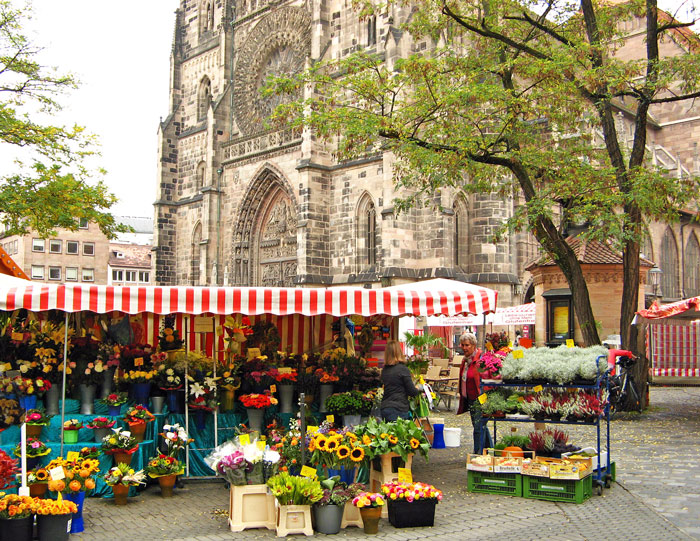
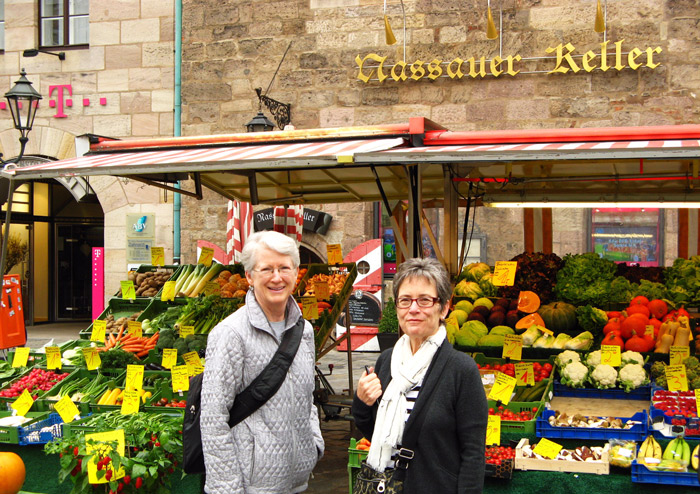
For anyone keeping tabs, the photos and narrative above are an amalgam of three days’ activities: Friday, Saturday and Monday. Whatever we may have missed will have to wait for our next visit.